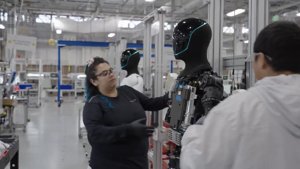Overview
In the cut-throat, over-saturated gladiatorial arena of Chinese electric vehicles, merely existing requires a certain chutzpah. To actually stand out? That takes a special kind of audacious brilliance. Step forward, XPeng Inc. (full name: Guangzhou Xiaopeng Motors Technology Co Ltd), a company that looked at the crowded EV pitch and thought, “You know what this really needs? Fewer wheels, more wings.” Founded in 2014, XPeng burst onto the scene with a clear mission: to build smart EVs for a younger, tech-forward generation, effectively positioning itself as a homegrown answer to Tesla.
From its early days of being uncharitably labelled a “Tesla clone,” XPeng has aggressively pursued its own distinct identity, centred firmly on in-house software development and a relentless push into autonomous driving. Led by the visionary (or perhaps wildly ambitious) software baron He Xiaopeng, the company’s DNA is less greasy workshop, more gleaming server farm, prioritising user interface and driver-assistance systems as much as battery range. But merely conquering the asphalt, it seems, was never going to cut it. With audacious forays into robotics and, hold onto your hats, actual honest-to-goodness flying cars, XPeng isn’t just vying for market share; it’s attempting to redefine the very fabric of mobility. The burning question, of course, is whether this is a stroke of visionary genius or a spectacular, cash-guzzling flight of fancy.
Key Points
- Founded: 2014, by Henry Xia and He Tao, with current Chairman and CEO He Xiaopeng joining in 2017.
- Headquarters: Guangzhou, China.
- Primary Focus: Smart Electric Vehicles (EVs) with a heavy emphasis on in-house developed software and autonomous driving technology.
- Key Technology: XNGP (Navigation Guided Pilot), an advanced driver-assistance system designed to compete directly with Tesla’s Full Self-Driving.
- Key Products: A growing lineup of EVs including the G9 SUV, P7 and P7i saloons, and the G6 coupe SUV.
- Future Bets: The company is actively developing vertical take-off and landing (eVTOL) vehicles, or “flying cars,” through its subsidiary AeroHT.
- Major Backing: The company is publicly traded on the NYSE and HKEX and counts Alibaba and, more recently, Volkswagen Group among its significant strategic investors.
- Market Position: A key player in China’s competitive premium EV market, battling domestic rivals like NIO and Li Auto, as well as the ever-present Tesla.
Analysis
History And Evolution
XPeng emerged from the fertile minds of former GAC Group executives, but its true genesis, the moment it decided to aim for the stars rather than just the motorway, arrived when He Xiaopeng – the billionaire co-founder of UCWeb, a company he shrewdly flogged to Alibaba – took the helm in 2017. He wasn’t just another deep-pocketed investor; he grabbed the steering wheel as Chairman and CEO, injecting a software-first ethos directly into the company’s bloodstream. This, it was clear, wasn’t going to be another old-guard carmaker clumsily bolting a tablet to a dashboard.
The company’s first vehicle, the G3 SUV, was a solid if unremarkable entry. The P7 saloon, however, launched in 2020, was the real game-changer. It swivelled heads faster than a supercar on a quiet street and cemented XPeng’s reputation as a serious, bona fide contender. With its slick design and genuinely advanced tech, it was the first proper broadside fired across Tesla’s bow by a Chinese startup. This was followed by a dizzying expansion of its lineup and not one, but two IPOs – first on the NYSE in 2020 and then a dual listing in Hong Kong in 2021 – hoovering up billions to fuel its boundless R&D ambitions.
Leadership And Vision
To truly get a handle on XPeng, one must first grasp the essence of He Xiaopeng. He’s no grease-stained petrolhead; he’s a dyed-in-the-wool software impresario, and frankly, it shows. His vision, it turns out, stretches far beyond the prosaic four-wheeled conveyances currently populating our roads. He waxes lyrical about a future of “multidimensional mobility” – which, stripped of its corporate jargon, means he wants to build contraptions that drive, walk, and, most spectacularly, fly.
“Our exploration of more efficient, safer, carbon-neutral mobility solutions goes far beyond just smart EVs,” He Xiaopeng has stated, signalling the company’s broader ambitions.
This audacious philosophy fuels the company’s gargantuan investment in R&D, particularly in the ever-elusive holy grail of autonomous driving. While many legacy automakers were content to simply buy their software off the shelf, XPeng was busy building its entire tech stack from the ground up. This grants them unparalleled control, but also incinerates cash at a truly prodigious rate. He Xiaopeng, it’s clear, is playing a very long game, betting the house that owning the core technology will ultimately be the ultimate differentiator – a strategy that could either be genius or a spectacular folly.
Technology And Innovation
XPeng’s undisputed crown jewel, the glittering centrepiece of its technological prowess, is its advanced driver-assistance system, XNGP. This is the company’s direct, no-holds-barred riposte to Tesla’s Autopilot and FSD, and by many credible accounts, it’s astonishingly capable, especially when navigating the labyrinthine urban jungles of China. The company has been relentlessly rolling out its “City NGP” function to dozens of cities, with the ambitious goal of achieving nationwide coverage – a feat that would make even the most jaded tech critic raise an eyebrow.
Then, of course, there’s the truly stratospheric division: XPeng AeroHT. This isn’t just some glossy PowerPoint fantasy; they’ve got flying prototypes that look like the love child of a sleek supercar and a military-grade drone, soaring through the skies. The latest models even boast a detachable flying module – imagine driving to a secluded field, detaching the wings, and then simply taking to the skies. It’s gloriously, wonderfully ambitious, bordering on the utterly bonkers, but it’s also an incredibly powerful statement of intent. Less fantastical, though still firmly in the “future tech” bucket, is the company’s robotics division, which has proudly showcased a robotic pony – presumably designed for the offspring of the obscenely wealthy and perpetually underwhelmed.
Market Position And Challenges
For all its dazzling, sky-high ambitions, XPeng faces a brutally grounded reality. The Chinese EV market isn’t just competitive; it’s an absolute bloodbath, a gladiatorial arena where only the fittest (and deepest-pocketed) survive. The company is locked in a relentless, cut-throat price war with Tesla, NIO, Li Auto, BYD, and what feels like a dozen other hungry brands. Sales figures have been as volatile as a meme stock, and profitability remains an elusive, shimmering mirage on the horizon.
The company’s biggest coup in recent memory, a veritable strategic masterstroke, was securing a hefty $700 million investment from Volkswagen Group in 2023. As part of this seismic deal, VW will actually leverage XPeng’s advanced platform to construct its own EVs specifically for the voracious Chinese market. This isn’t just a cash injection; it’s a monumental, thunderous vote of confidence in XPeng’s technology from one of the world’s automotive behemoths. It provides a much-needed lifeline of capital and a powerful strategic partner, but it also starkly underlines the immense pressure XPeng is under to not just survive, but to truly scale and compete effectively under its own steam.
Verdict
XPeng is, without a shadow of a doubt, one of the most utterly fascinating sagas unfolding in the EV universe. It has masterfully forged a brand identity on the back of genuinely impressive technology, sleek, eye-catching design, and a software-first approach that feels utterly contemporary. They churn out compelling cars, bristling with driver-assistance features that are, quite frankly, among the best in the business. The Volkswagen partnership? That’s not just a handshake; it’s a colossal validation of their engineering prowess, a resounding declaration that their tech is the real McCoy.
However, the company’s sheer, unbridled ambition is both its most potent superpower and its most glaring Achilles’ heel. While trying to win a brutal, no-holds-barred war on the asphalt, it’s simultaneously pouring eye-watering sums into a bid to conquer the very heavens. The flying car and robotics projects, while undeniably cool, are a colossal drain on resources that could otherwise be laser-focused on the rather more immediate, core business of selling cars at a profit. In a market characterised by razor-thin margins and consumers as fickle as the British weather, this perceived lack of singular focus could prove to be a critical vulnerability.
Ultimately, XPeng is a high-octane, all-or-nothing wager on a fully autonomous, truly multidimensional future. It’s a company for the incurable tech optimists, those who genuinely believe the definitive answer to gridlock isn’t better public transport, but simply to sprout wings and fly over it all. For now, they craft a jolly good electric car. Just don’t be too chuffed if your next software update casually asks if you’d prefer to calculate your route by road or, you know, by low-altitude airspace. Buyer, be warned: one of those options is probably still very much in beta.






